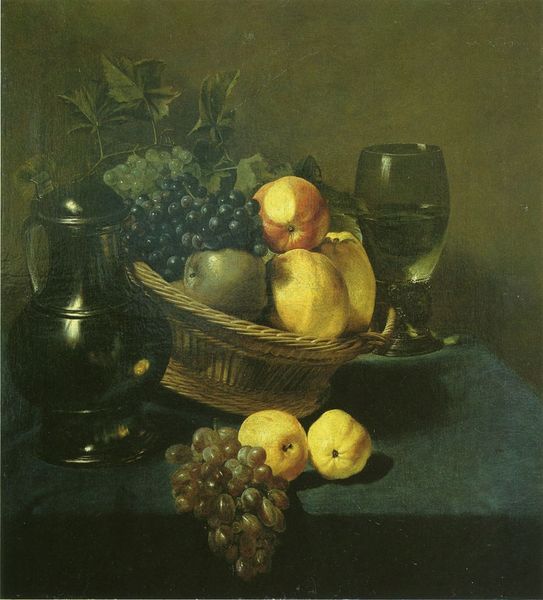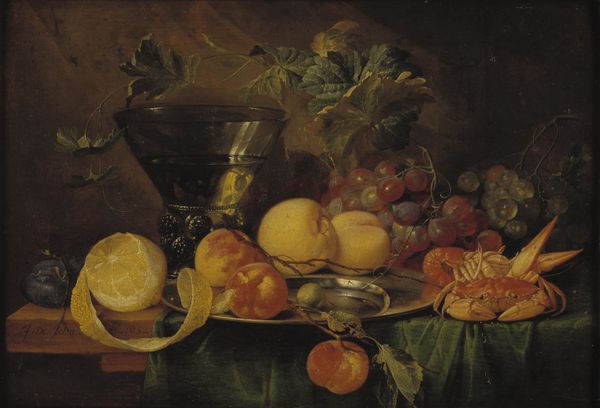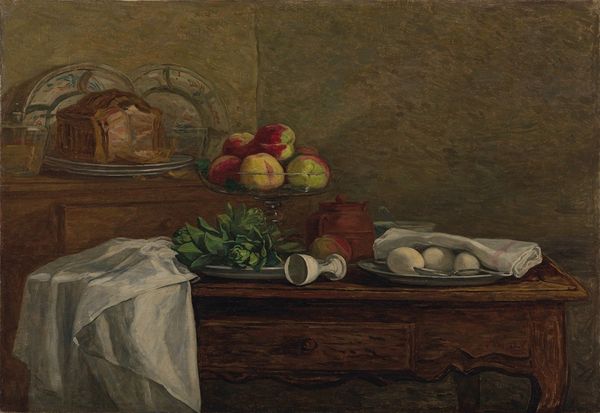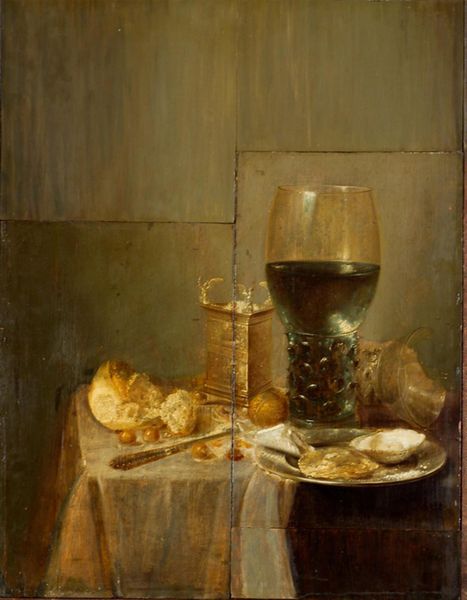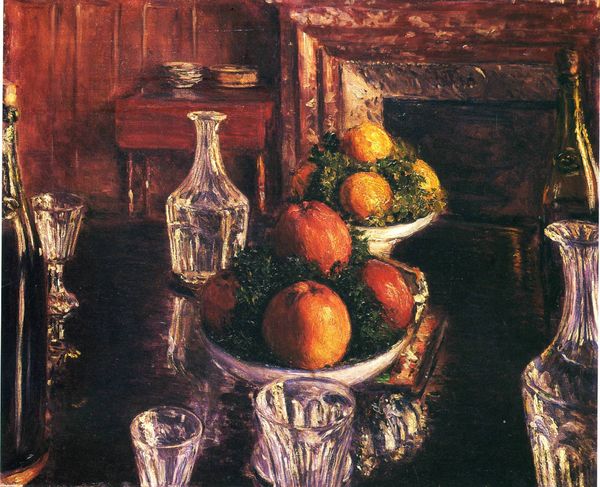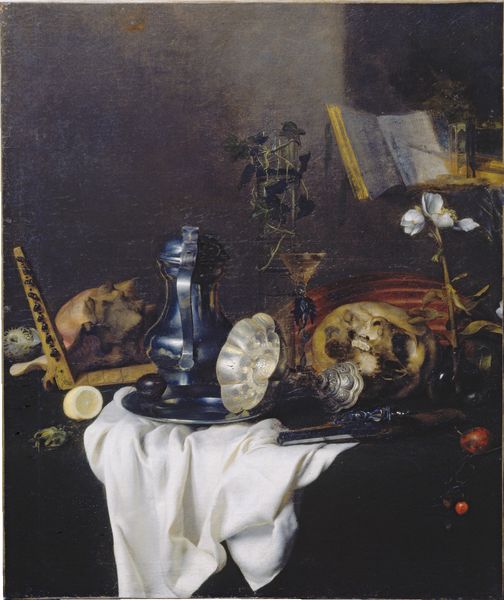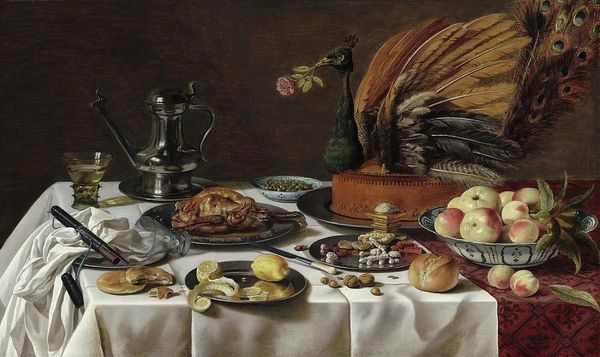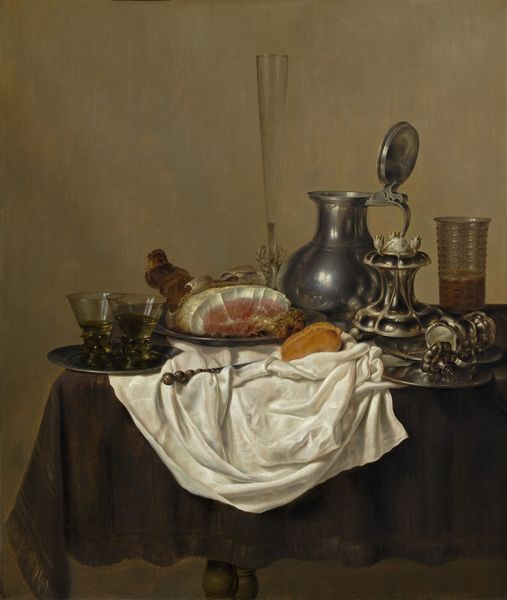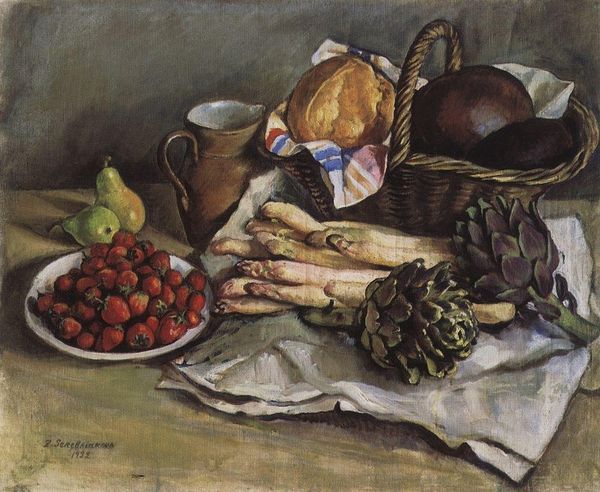
oil-paint, glass
#
baroque
#
dutch-golden-age
#
oil-paint
#
glass
#
oil painting
#
realism
Copyright: Public domain
Editor: Looking at "Still Life with Oysters" painted in 1633 by Pieter Claesz, made with oil paint, it's striking how much detail is packed into such a small scene, I can almost smell the lemon. How would you interpret the significance of these everyday objects depicted in such a refined manner? Curator: It’s crucial to see this still life as participating in a larger visual culture. These paintings weren’t simply about pretty things; they spoke to wealth, trade, and the emerging mercantile class in the Dutch Golden Age. Oysters, lemons, wine - these were luxury items. Editor: So it’s less about the inherent beauty and more about their social context? Curator: Precisely. Ask yourself, who would be commissioning and displaying such a painting? And what statement were they trying to make? Think about the symbolism of the wilting lemon peel – does it only represent decaying freshness? Or, in this lavishness, is it about something more significant and human? Editor: Interesting point. Is the inclusion of a simple loaf bread a way to balance such imagery of perishable and costly commodities, by making more apparent how common elements sustain those wealthy Dutchmen represented at large in their art? Curator: Potentially. Or is even bread subject to status? Were its grains from afar? Also, consider where these paintings were displayed – were they meant for public admiration or the private enjoyment of a select few? These settings dictated how they were perceived, contributing to the construction of civic identity. Editor: So, the placement and consumption of this image reinforces the narrative of who holds the economic and cultural power. Thanks, I have got so much to consider for my analysis. Curator: My pleasure, seeing how images circulate adds richer complexity and unveils power structures that have impacted our past.
Comments
No comments
Be the first to comment and join the conversation on the ultimate creative platform.

